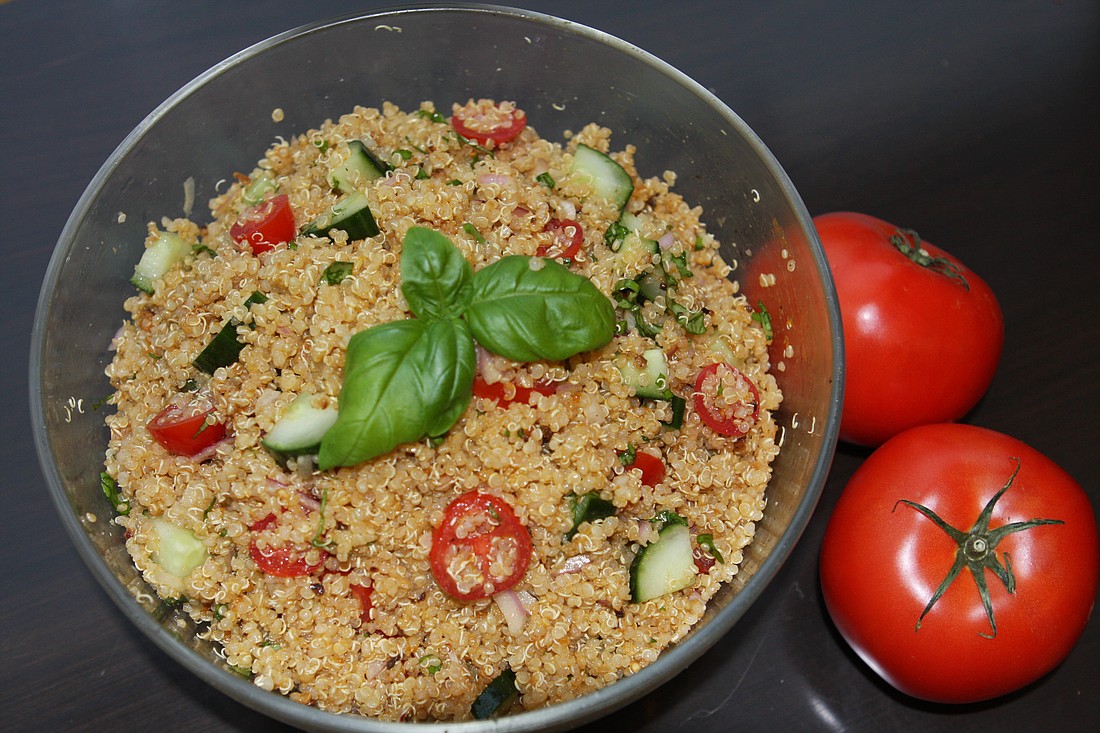Daily Dose of Whole Grains Wards off Cancer, Heart Disease
November 27, 2012 at 1:33 a.m.
Grains are an important part of a healthy, balanced diet. Whole grains in particular provide critical nutrients such as energy-boosting carbohydrates, fiber, vitamins, minerals and antioxidants. The U.S. Dietary Guidelines recommend that adults consume three to five servings of grains daily, with at least half being from whole grain sources. A typical serving is about one-half cup of cooked grains such as pasta or rice, one slice of bread or one cup of ready-to-eat cereal.
Many of us remember all too well that red box of instant rice and melt-in-your-mouth white sandwich bread. These types of foods start out as whole grains but are processed, losing much of their nutrient and fiber content. Whole grain foods are made with the entire seed of a plant. The seed consists of three parts: the bran, or outer layer, which contains B-vitamins and most of the fiber; the endosperm, the large, starchy portion which provides most of the carbohydrates; and the germ, which contains some protein and healthy fats.
Carbohydrates provided by whole grains are released slowly in the body, which helps maintain satiety and blood sugar levels. Their protein is best utilized when paired with legumes such as beans, as the amino acids complement one another to create a complete protein. Whole grains are also a great source of minerals such as magnesium, phosphorus, manganese, selenium and zinc. Minerals are required for your body’s biochemical processes, and obtaining them from food allows for the best absorption. Research has shown much support for whole grains in the prevention of heart disease, cancer and diabetes.
Each type of grain offers different nutritional benefits, so eating a variety is the best way to go. Interesting and healthful grains have become more available in recent years. For a wide and colorful array, browse the bulk food section at your local market. Here is a short list of goods you might find:
Amaranth: This grain has a high protein content and strong flavor. It is used in cereals, breads and muffins,but since it is gluten-free it must be combined with other flours for leavening.
Buckwheat: Buckwheat is not actually made from wheat, so it is also gluten-free. It has a nutty flavor and is commonly used for pancakes. It is the main ingredient in Japanese soba noodles.
Bulgur: This is made from wheat kernels and is high in fiber. It cooks very quickly and is wonderful in salads or pilafs.
Quinoa: Quinoa contains all the essential amino acids so it is a complete protein by itself. It is a very versatile, gluten-free grain that steams as easily as rice and can be used in cold or hot dishes.
Rice and oats: These tried-and-true familiars can be changed up a bit. Mix brown and wild rice for a great chewy-crunchy texture, or slow-cook steel-cut oats instead of rolled for a nuttier flavor and robust texture. Both are naturally gluten-free, but check oats labels for confirmation.
Whole wheat: There are 30,000 varieties of wheat grown in the U.S.! The common brown variety is a hard wheat great for breads but too heavy for delicate baked goods. Lighter whole wheat alternatives are whole wheat pastry flour and whole white wheat. Both have a milder flavor and lighter color.
When buying prepackaged foods, look for labels that state “100 percent whole grain.” Beware of items claiming to be “made with whole grains” as they usually contain mostly processed grain. Another tricky marketing tool is labeling products such as dinner rolls or crackers as “wheat.“ They may be darker, but unless the label says “whole wheat” they are made with refined flour.
Whole grains are economical, nutritious and easy to incorporate into meals and recipes.With all the delicious whole grain choices we have, it’s easier than ever to make refined grains a thing of the past.
Non-profit, accredited Bastyr University (Bastyr.edu) offers multiple degrees in the natural health sciences, and clinical training at Bastyr Center for Natural Health (BastyrCenter.org), the region’s largest natural medicine clinic.
Quinoa Tabbouleh
Ingredients
• 1 cup quinoa, rinsed
• 2 cups water
• 1/3 cup extra virgin olive oil
• 1/3 cup fresh lemon juice
• 1 cup chopped red onion
• 1 cup chopped fresh parsley
• 1/4 cup chopped fresh mint
• 1-1/2 cups grape tomatoes, halved
• 1 large cucumber, seeded and chopped
• 3 cloves garlic, minced
• Salt and pepper
Directions
1. Bring quinoa and water to a boil in medium saucepan over high heat. Reduce heat to medium-low and simmer until tender, about 10 minutes. Cool.
2. Add oil, lemon juice, onion, parsley, mint, tomatoes and cucumber; toss to combine. Season with salt and pepper. Cover and chill.
Adapted by Catherine Lindberg from allrecipes.com
This article appeared in the December 2012 issue of Northwest Prime Time, the Puget Sound region's monthly publication celebrating life after 50.





